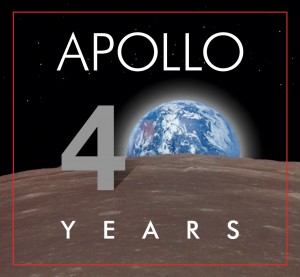Links for Friday, 24 February 2012
NASA thinking about an Earth-Moon-Libration Point 2
Well it’s not quite Space 1999, but pretty cool nonetheless,
NASA is pressing forward on assessing the value of a “human-tended waypoint” near the far side of the moon — one that would embrace international partnerships as well as commercial and academic participation, SPACE.com has learned.
According to a Feb. 3 memo from William Gerstenmaier, NASA’s associate administrator for human exploration and operations, a team is being formed to develop a cohesive plan for exploring a spot in space known as the Earth-moon libration point 2 (EML-2).
###
Do you know what a Mainframe is? Well, NASA just shut down their last one
###
Even more Geek News: Photos of Mars Landers from Mars orbit
###
Abe Lincoln (on a penny) to be used as a quick size comparison indicator on the next Mars Rover
###
NASA taking stock of Eart’s melting land ice
From the 2003-2010 observations,
The total global ice mass lost from Greenland, Antarctica and Earth’s glaciers and ice caps during the study period was about 4.3 trillion tons (1,000 cubic miles), adding about 0.5 inches (12 millimeters) to global sea level. That’s enough ice to cover the United States 1.5 feet (0.5 meters) deep.
Yikes! That’s very unsettling news.
Yet, another report headlines us to the news that Earth’s Polar Ice Melting Less Than Thought. An excerpt (emphasis added),
Nearly 230 billion tons of ice is melting into the ocean from glaciers, ice caps, and mountaintops annually—which is actually less than previous estimates, according to new research by scientists at the University of Colorado, Boulder.
Further in the US News report researcher John Wahr states (wisely, in my opinion),
“Even with an eight-year estimate, it’s not clear how far into the future you can project,” he says. “A lot of people want to predict into the end of the century, but I think it’s too dangerous to do that … We don’t have enough info to know what’ll happen. There’s some ebb and flow to these things.”
Indeed, if anyone ever wants to sell you something now based on a prediction of what will happen 100 years from now, you’d better grab hold of your wallet (I think Michael Crichton said that). From the NASA news release, after they’ve admitted the same as the US News report, it reads,
One unexpected study result from GRACE was that the estimated ice loss from high Asian mountain ranges like the Himalaya, the Pamir and the Tien Shan was only about 4 billion tons of ice annually. Some previous ground-based estimates of ice loss in these high Asian mountains have ranged up to 50 billion tons annually.
Ouch!
Imagine if you had some remodeling work done on your home and the contractor estimated it would cost $50,000 but the final bill came in at only $4,000? Well, of course you’d be ecstatic, but wouldn’t you also be wondering why the contractor was so inept? Or what if a stockbroker claimed an investment would return $50,000 but it only came back with $4,000?
Yet we’re supposed to based governmental subsidies, regulations, etc., all on long-range “scientific” esitmates that, quite frankly, are “dangerous” to do.


